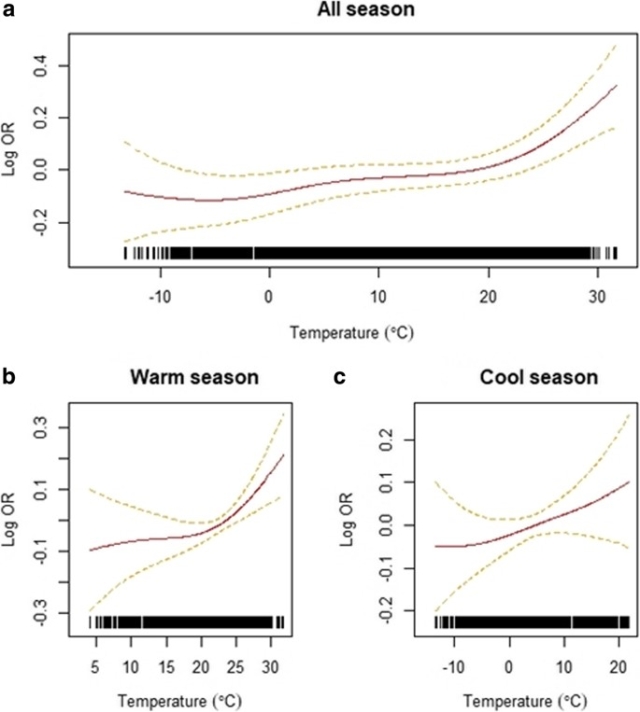論文情報
Author: Satbyul Estella Kim, Hyewon Lee, Jayeun Kim, Young Kyu Lee, Minjin Kang, Yasuaki Hijioka, Ho Kim
Year:2019
Journal:Environmental Health 18, 55
論文へのリンク(英文のみ)
キーワード
Ambient temperature, Acute kidney injury, Emergency department visit, Case-crossover design, Exposure-response curve
要旨
Previous studies show that escalations in ambient temperature are among the risk factors for acute kidney injury (AKI). However, it has not been adequately studied in our location, Seoul, South Korea. In this study, we aimed to examine the association between ambient temperatures and AKI morbidity using emergency department (ED) visit data. We obtained data on ED visits from the National Emergency Medical Center for 21,656 reported cases of AKI from 2010 to 2014. Time-stratified case-crossover design analysis based on conditional logistic regression was used to analyze short-term effects of ambient temperature on AKI after controlling for relevant covariates. The shape of the exposure–response curve, effect modification by individual demographic characteristics, season, and comorbidities, as well as lag effects, were investigated. The odds ratio (OR) per 1 °C increase at lag 0 was 1.0087 (95% confidence interval [CI]: 1.0041–1.0134). Risks were higher during the warm season (OR = 1.0149; 95% CI: 1.0065–1.0234) than during the cool season (OR = 1.0059; 95% CI: 1.0003–1.0116) and even higher above 22.3 °C (OR = 1.0235; 95% CI: 1.0230–1.0239). This study provides evidence that ED visits for AKI were associated with ambient temperature. Early detection and treatment of patients at risk is important in both clinical and economic concerns related to AKI.






